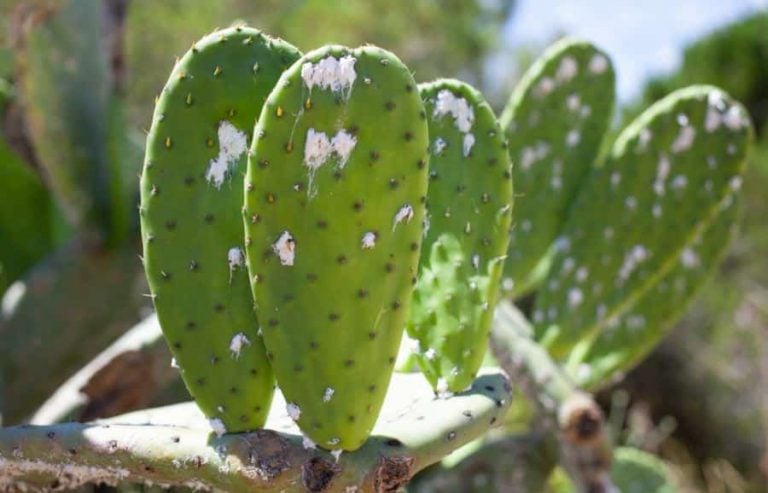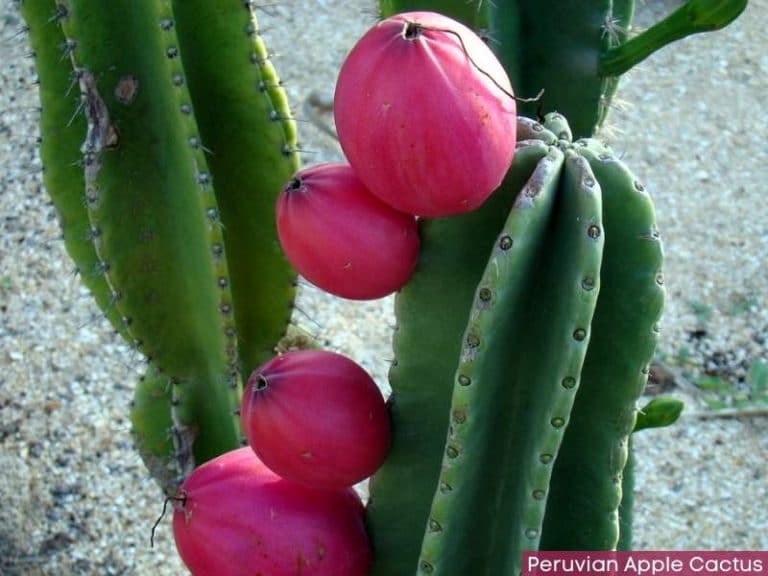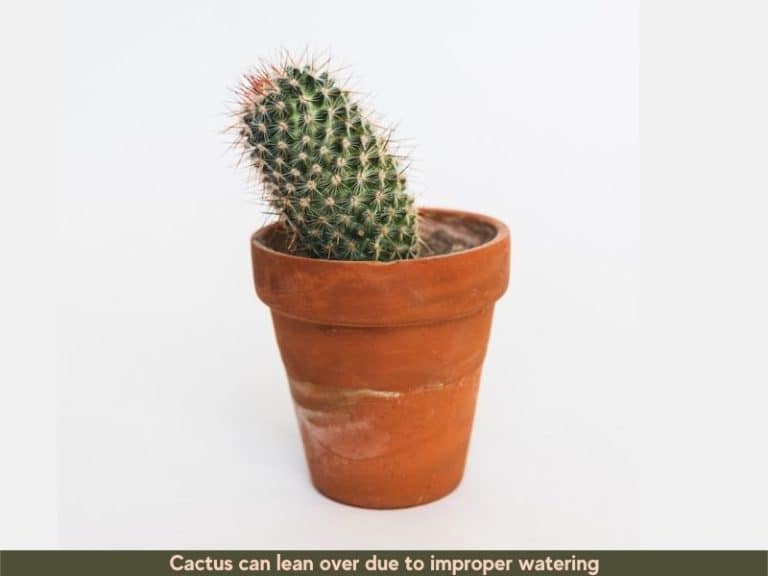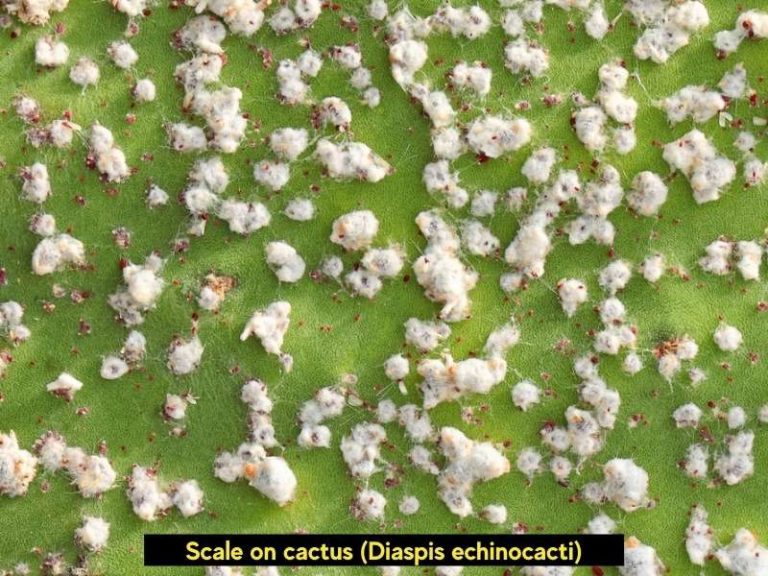Underwatered Cactus: Signs + How to Save the Succulent
Cactus plants are well adapted to hot and dry climates. Their roots penetrate deep into the soil to collect water, making it easier for the succulents to thrive in dry habitats. However, some cacti species can hardly thrive in deserts and still need proper watering for cell production and growth. So, what happens when the cactus is underwatered? What can you do to save and revive the succulent?
An underwatered cactus will start turning brown on the stems and leaves and may feel soft to the touch. The soil will be very dry and the succulent will start to bend and lose its upright posture. Repot the cactus if its potting soil is compacted and water it immediately to save and revive it.
Signs – How to tell a cactus plant is underwatered

The cactus plant is drought-resistant and can die if it does not get water for prolonged periods. Here are the signs to help you know if your plant is dehydrated:
The leaves feel soft
Start by pressing the leaves with your hands. Do they feel soft or turgid? An adequately watered cactus plant should feel firm and goes back to its original shape quickly. If all the leaves are soft and appear sunken when pressed, it means your plant has used up all its stored water.
But if some parts of the leaves are soft while others are puffy, it could be a sign that your plant’s roots are rotting. You may need other solutions to revive your cactus other than watering.
The soil is totally dry (from top to bottom)
The cactus plant grows well in fast-draining soil with abundant inorganic nutrients. Total dryness in the soil is a symptom of underwatering. You can test by sticking your finger or a gardening trowel into the pot.
For accurate results, use a soil moisture meter to check if the plant has enough moisture in the soil. I recommend the Gain Express Soil pH and Moisture Meter for both indoor and outdoor plants.
If the bottom part is damper than the surface, your plant doesn’t need watering. Wait for a few days and repeat this process.
A limp or bending cactus plant
A cactus plant that appears limp is a sign of underwatering and may continue to droop and wilt until it dries up if you do not water it on time. A healthy cactus plant draws water in a process called hydrostatic pressure to remain firm, stand upright and maintain its greenness.
Reduced hydrostatic pressure may also cause its leaves to droop, sag or appear yellow. Unless you’ve confirmed that your plant isn’t sick, it’s probably underwatered and needs to be watered as soon as possible.
Wilting leaf tips that turn brown
If your cactus was once fleshy, underwatering might cause its leaf tips or edges to dry out. The succulent may also turn brown, notably if you’ve overexposed them to the sun.
Brittle roots
Brittle roots that break off into pieces also signify underwatering and reduced nutrient intake in the soil. By the time it gets to this point, it means your plant has exhausted all its options of drawing water from the soil.
Spines falling off
The spines of your cactus plant falling off is a sign of severe dehydration. However, it can also mean your succulent is being attacked by pests such as mealybugs (white fuzz on cactus leaves), or is not getting enough sunlight.
Watering malpractices are the major cause of underwatering in cacti. Unlike other houseplants, the roots of a cactus plant draw water from the bottom part of the soil. If you’ve been pouring water from the top to the bottom, chances are the soil may not absorb as much water as possible.
Overwatering the cactus won’t make it compensate for this watering malpractice. Start by placing the well-drained container on a basin or pan of water to increase its absorption rate.
How to save an underwatered cactus
The first thing you should keep in mind about growing a cactus plant is recreating its natural habitat. We’re talking about a desert-like environment. So, if your plant is having one or more of the above symptoms, the following tips will help you revive it:
1. Remove the dead or damaged parts
One of the best ways to treat a problem is removing any part that may compete with other healthy parts for water and nutrients. Using a sharp and sterilized knife or clipper, cut off the dead leaves and spines. You can leave the yellowed ones because they aren’t diseased.
2. Water the cactus plant (starting from the bottom)
To ensure your plant is adequately rehydrated, place the pot or container on a pan with water. The bottom part of the soil will immediately absorb the water and transport it to the topmost part through capillary action.
Give it a few days. If it perks up afterward, then you can relax. But if it still appears limp and doesn’t show any improvements, your plant could be saying that its reason for distress is more than underwatering. It’s best to check out the roots for rot or any other disease.
3. Repot your cactus in clean soil
Sometimes, the type of soil your plant is growing on could be affecting your watering actions. Younger cacti need re-potting every year, while the older ones don’t. So, if you notice your plant doesn’t show any improvements after readjusting your watering pattern after a few days, it’s time to re-pot it in clean soil. When re-potting, ensure the container is big enough to accommodate the growing needs of a cactus’ roots.
4. Provide your cactus with good airflow and 60-74°F temperature
While the sun is an essential aspect that plays a role in sustaining the growth of a cactus plant, too much of it can dry out your plant. Placing the pot in a spot with the direct and intense sun makes it even worse.
The average temperature a cactus needs ranges from 60-74°F. During the summer, you can place the pot outside to receive the morning sun. That’s approximately 6 hours of adequate sun. Also, avoid placing it near a heater or radiator as they can dry out the soil and plant.
Overwatered vs. underwatered cactus
Underwatering is safer than overwatering when growing a cactus plant. It’s improbable to revive an overwatered cactus, unlike when it’s dehydrated and still in a state that you can revive. But since the signs of underwatering are almost similar to those of overwatering, how do you tell them apart?
Here are the differences between an overwatered and underwatered cactus:
| Overwatered cactus | Underwatered cactus |
| The leaves and stems change from green to brown or black | The leaves and stems change from green to yellow |
| The cactus roots may rot or decay | The cactus roots become brittle |
| The base of the stem may appear dark-colored | The bottom of the stem may become lightly discolored |
| Stems and spines turn mushier | Stem and spines dry out and start to curl |
| Wilted leaves | Shriveling leaves |
An underwatered cactus is drier while an overwatered mushier. If your plant is suffering from symptoms of waterlogging, it’s best to lower the amount of water you give it and also how frequently you do so. If symptoms persist, seek help from a knowledgeable gardening expert.
Can you revive a dried-out cactus?
You can revive and regenerate a drying cactus plant if there’s a little healthy tissue still left in it. Treat the succulent if there’s any rotting tissue then repot it using a new potting mix. Water to keep the soil moist to help reverse the signs of dehydration.
Ensure that you choose a suitable watering method, readjust to ideal temperature and light, and feed it with a succulent fertilizer to keep it healthy. Be careful not to add too much fertilizer.
Overall, a cactus plant is a tolerant plant that can bounce back on its own once you fix the improper care practices. Once you notice your plant looking dehydrated, all you need to do is give it a good watering and continue with the routine at least twice a month until it revives.
An attack from mealybugs is also an easier way of killing a cactus. This bug is notoriously known for sucking the sap from the cactus plant, leading to its death. They can also excrete wastes that can reduce their quality. If you notice mealybugs lurking near your plant, you may want to seek pest extermination services immediately.
How often to water cactus (Indoors and outdoors)
Many factors play a role in determining how frequently you water your cactus. The most important one is your cactus species. In addition, your cactus may adapt to the new conditions you give it, compromising your watering methods. Here is how to water your cactus the right way:
Indoor watering guide for a cactus plant
The growing conditions of an indoor cactus should be similar to its native environment. Apply these watering strategies:
- If its pot receives too much sun, water it regularly: I’d advise that you place your plant’s pot in an area with sufficient but no direct light. If the pot faces the south-facing window, you’ll need to water it regularly.
- Water it less frequently during its dormant stage: During the months of winter, watering it at least once a month is appropriate. Do it when the soil is arid.
Outdoor watering guide for a cactus plant
Cacti growing outdoors need slightly different growing conditions than their indoor counterparts. The only thing that reconciles the two is the condition of the soil. If it is dry or soggy, the outdoor plant may not thrive well.
- Harvest rainwater: Rainwater doesn’t contain toxic minerals that can affect your plant. If the rains in your area come once in a while, harvest some of it for future use.
- Water your plant after every ten days: During summer, when the sun is scorching, you can water your cactus after every ten days. Use a hosepipe and pour as much water as you can for easy absorption.








I am so happy to have found this article. I have been collecting cactus of all kinds. I lost two recently. Am noticing small odd changes with a few. I had no idea I could underwater a cactus. Thanks again.